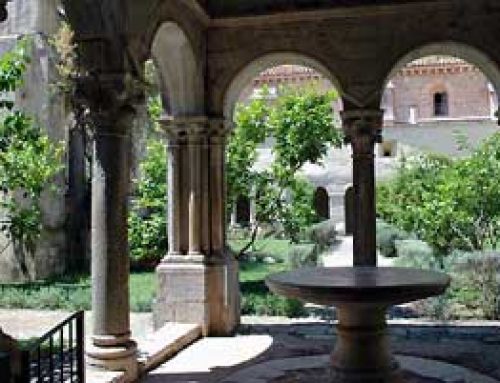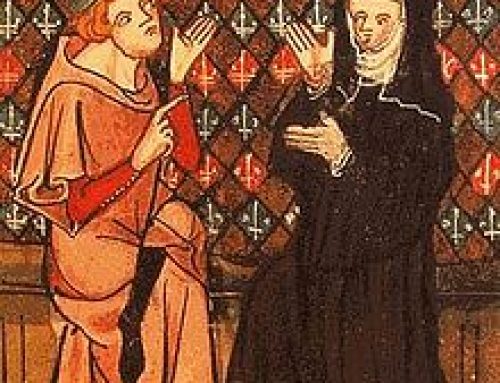
Façade of Pisa’s Duomo
We call this kind of building Romanesque because it is a little like Roman architecture, with its columns and round arches. But people built Romanesque buildings around 1000-1200 AD instead of during the Roman Empire.
The fall of the Roman Empire, about 500 AD, made everybody in the empire poorer than they were before. But the people living in Europe were much poorer. In the eastern and southern Mediterranean, people weren’t as poor. They went on building big stone buildings. In 532 AD, Justinian built Hagia Sophia in Constantinople. In 691, Abd al-Malik built the Dome of the Rock in Jerusalem. In 706, al-Walid built the Umayyad Mosque in Damascus, and in 784, Abd ar-Rahman I built the Great Mosque of Cordoba in Spain.
By this time the Europeans had begun to recover a little from the fall of Rome. They wanted some new stone buildings themselves. In 792 AD, Charlemagne built a palace and chapel at Aachen, in northern Europe.
Most of the people who could afford to build in Europe were monks. In 814 AD, the monks of St. Gall (Switzerland) built a big stone church.In 955 AD, the monks of Cluny built a great church with a stone roof. About 1000 AD, the monks of St. Germain Abbey built the church of St. Germain des Pres in Paris. At the same time, the monks of St. Hildesheim in Germany also built a Romanesque church. In 1050 AD, the Cluny monks built another church at Moissac in southern France.

The Romanesque cathedral at Vezelay (1100 AD). This is where Bernard of Clairvaux preached the Second Crusade
After that, more and more people began to build in the Romanesque style. About 1060 AD, Normans in Caen built the Women’s Abbey and the Men’s Abbey. In 1078, they built the Tower of London. Meanwhile, cities in southern Europe, because they were trading with West Asia and North Africa, began to have more money. About 1064 AD, the people of Pisa built their cathedral. Then everybody in southern Europe had to build something: the people of Toulouse built the pilgrimage church of St. Sernin (1080 AD), the people of Venice built St. Marks (1094 AD), the people of Florence built the baptistery of Florence, Italy, and in southern France people built the pilgrimage church at Vezelay (both about 1100 AD).
Romanesque buildings were made of stone. But they often had wooden roofs. European architects were not very good at building stone roofs yet. If they did have stone roofs, the walls had to be very thick in order to hold up the roofs, and there couldn’t be very many windows either. So Romanesque buildings were often very heavy and dark inside. That was fine, since most of the buildings were in southern countries where it was often very hot, and these buildings stayed nice and cool: free air-conditioning! Usually architects designed Romanesque churches so that the main doors were on the west side and the altar was on the east side. This meant that people prayed facing Jerusalem, where Jesus was crucified, but it also let more sunlight into the dark churches.
Romanesque churches had round arches, like Roman buildings, and decorated column capitals like the Romans too. Only Romanesque capitals often have carvings of people or animals on them instead of plants.
By 1150 AD, the Romanesque buildings were getting bigger and fancier. In 1173 AD, the people of Pisa added a bell tower (the Leaning Tower of Pisa) and a baptistery to their cathedral. But by this time, the armies of northern Europe were conquering southern Europe and taking their money north, where they used it to build Gothic cathedrals. In the south, most people couldn’t afford to build so much anymore.
Learn by doing: build a Romanesque church in Minecraft or in Lego.
More about Gothic architecture
Bibliography and further reading about Romanesque architecture:




